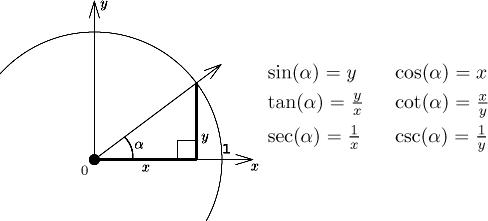
Here we will assume that you are familiar with angles and how they are measured, in particular with radians. If you are not sure, you can have a look at this note.
There are several ways to define trigonometric functions. We will briefly recall two of them, based on geometric ideas. Then we will look at properties of trigonometric functions, recall some trig identities, try to make some sense of their inverses and conclude with a brief note concerning secant and cosecant.
Unit cirlce. Let
α be any angle.
Consider a unit circle in the plain and the ray going
from the origin at the angle
α.
Let

Of course, some definitions do not make sense if
Clearly we then have

The functions
Note that when defined like this, all these functions are
Right-angle triangle. Let
α be an angle from the
interval

These functions are connected by the same formulas as above. How do we extend
these definitions to any angle
α? First we define
For α from
For α from
Thus we get sine and cosine on
We conclude this part by recalling the values of sine and cosine for the popular angles:

There is a simple way to remember these using the left hand.
Another practical remark, instead of writing
The sine. The domain:
The graph:

The function is continuous on its domain,
From the periodicity we have
Zero points of sine are points of the form
Concerning limits at endpoints of the domain, limits of sine at infinity and negative infinity do not exist.
The derivative:
The cosine. The domain:
The graph:

The function is continuous on its domain,
From the periodicity we have
Zero points of cosine are points of the form
Concerning limits at endpoints of the domain, limits of cosine at infinity and negative infinity do not exist.
The derivative:
The tangent. The domain:

The graph:
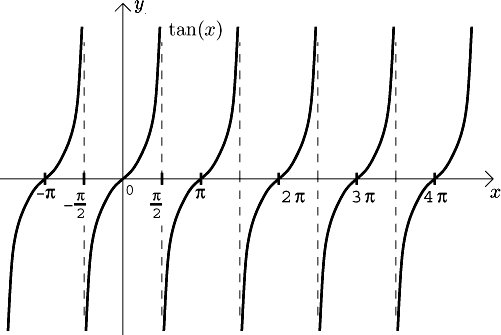
The function is continuous on its domain,
Zero points of tangent are points of the form
Concerning limits at endpoints of the domain, limits of tangent at infinity and negative infinity do no make sense since the domain does not include any neighborhood of infinity or negative infinity. Limits at finite endpoints of the domain do not exist, but we have one-sided limits there:
![]()
The derivative:
The cotangent. The domain:

The graph:
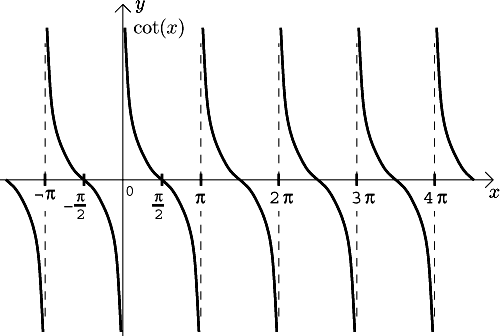
The function is continuous on its domain,
Zero points of cotangent are points of the form
Concerning limits at endpoints of the domain, limits of cotangent at infinity and negative infinity do no make sense since the domain does not include any neighborhood of infinity or negative infinity. Limits at finite endpoints of the domain do not exist, but we have one-sided limits there:
![]()
The derivative:
First some popular identities for sine and cosine.
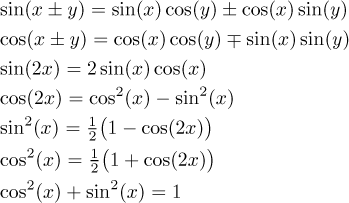
The following identities are less popular, but sometimes they are very useful.
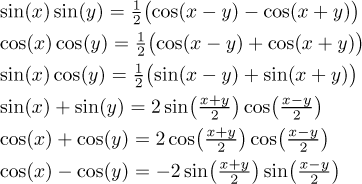
Sine and cosine can be also obtained (or even defined) using exponentials and complex numbers.
![]()
Finally, sometimes this trick is also useful.

We have an obvious problem when
Now some popular identities for tangent and cotangent.

Since sine and cosine can be expressed using complex exponentials, the same is true for tangent and cotangent.
![]()
Finally, we will show some formulas that relate sine/cosine and tangent.
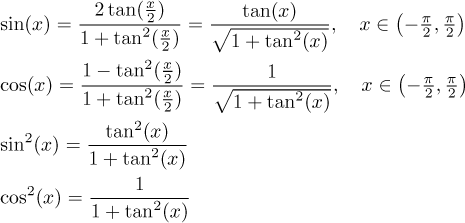
When we look at the graphs above, we see right away that none of the four basic trig functions is 1-1, so they do not have inverses. On the other hand, from practical point of view, some sort of inverse would be immensely useful, and indeed people were assigning angles to sides of triangles long before mathematicians came up with the notion of inverse. In order to do this properly we use the usual trick, we will restrict the trig functions to intervals on which they are already 1-1. We will choose intervals so that they are as large as possible (so that they cover the whole range) and also so that they give "reasonable" angles, meaning around 0. Indeed, it is more practical to learn that the angle in a triangle is 30 degrees then learning that it is 750 degrees (we should be actually using radians, but degrees are easier to imagine and type on the Web, so I made an exception here).
Inverse trigonometric functions. They are defined as follows. First we restrict the four trigonometric functions to intervals as indicated.
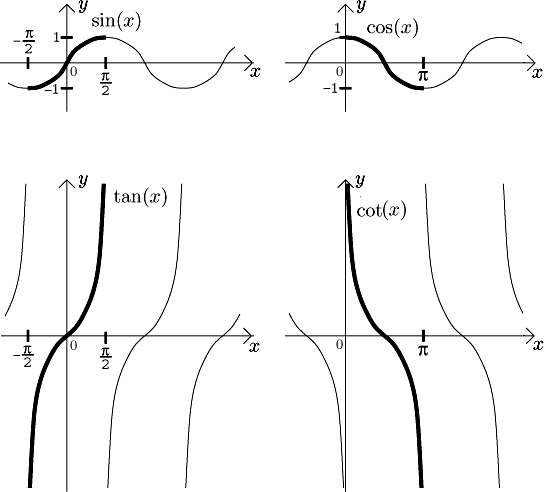
Then we consider inverses to these restrictions. They are called arc sine (denoted arcsin), arc cosine (denoted arccos), arc tangent (denoted arctan) and arc cotangent (denoted arccot). The graphs of these functions are here:
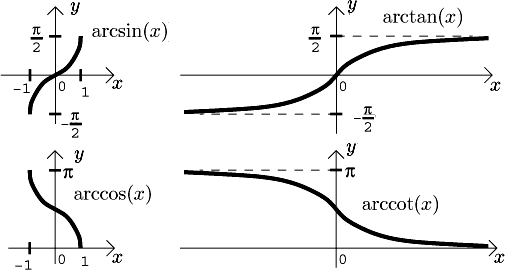
We now list the basic properties of these inverse trig functions. They are all continuous, monotone and bounded.
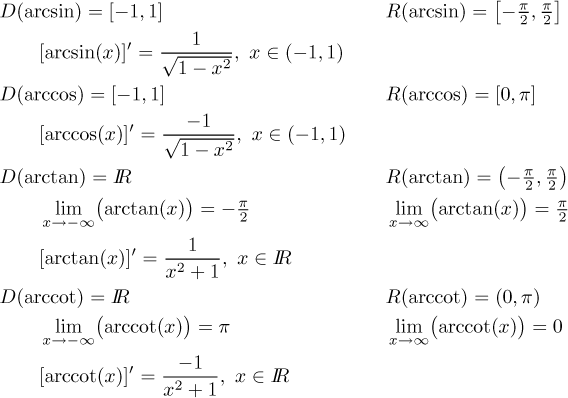
Note: Many authors (and most calculator makers) actually use a
different notation, namely
Remark: Let us return to the original question: We are given a number
y and we want to find a number x satisfying, say,
Let
If
If
Let
If
If
Let
If
Let
If
There are very interesting formulas relating trig functions and their inverses. They are seldom used, but they are so cute we can't resist putting them here.
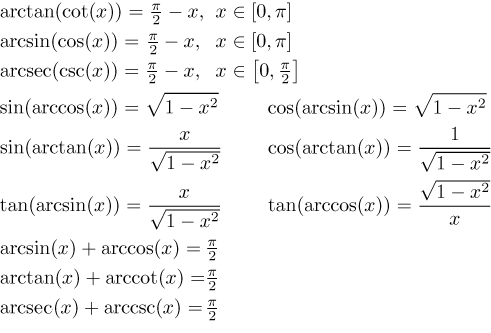
We will just briefly review their properties. Graphs:

Derivatives:
